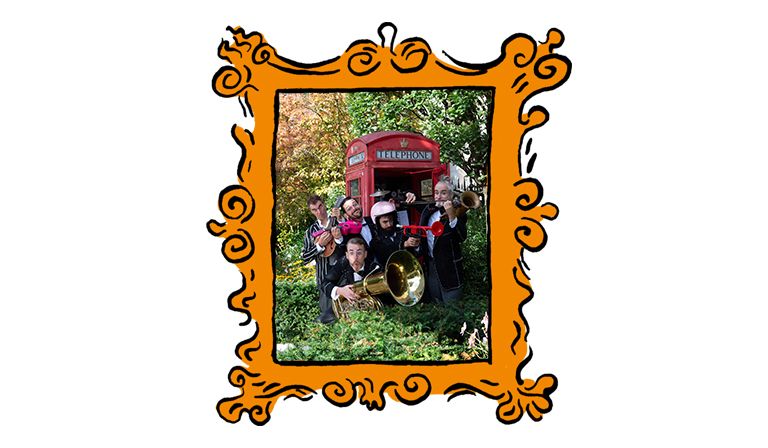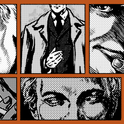You don’t have to visit the August-long Edinburgh Fringe to pick up on the existential crisis facing the world’s largest performing arts festival. Just being in Britain will do. Because, this year, the Fringe feels like Britain in microcosm.
On the positive side, the Fringe is exactly what this country does best: attracting talent from around the globe; synthesising new ideas in quirky ways; feeding that talent back into industry. The BBC still gets its best ideas here, then digests them at the overlapping TV Festival up the road.
But now Britain’s malaise has become the Fringe’s malaise. The housing system is broken. Accommodation rents have always been high, but now they price out artistic performers who lack either a rich parent or a dangerous attitude to debt. Collaboration with European artists is rapidly reduced, thanks to post-Brexit visa chaos. Many small arts companies and Edinburgh businesses will never return after Covid. The Fringe has always demonstrated that Britain’s cultural strength depends on its prosperity: now, like the economy, it is shrinking rather than growing.
Our cultural polarisation has also reached Edinburgh. This year’s Fringe was overshadowed by an attempt to cancel an appearance by the gender-critical MP Joanna Cherry; last year’s by a similar row over the comedian Jerry Sadowitz. It is inevitable that a cultural festival should become a frontline in a culture war, but if a fringe theatre fest is no longer a place of intellectual permissiveness, it is surely doomed.
Despite all this, the Fringe is still invigorating. If you’re heading up in the second half of the month, a good tip is to base yourself for each day around a different venue. There are more than 250 spots in Edinburgh converted into performance spaces during the Fringe—I got locked into a shipping container for a séance this year—but a handful of multivenue complexes have established themselves as key centres, each curating a sophisticated programme of talent-spotted performers.
For me, the Most Valuable Player of the festival is a building called Summerhall. It’s a relative newcomer. Until 2010, the University of Edinburgh’s veterinary school was based at the site. Every surface at the on-site pub still appears covered in specimen slides from diseased animals. Pretentious or educational? Take your pick. But in the decade since Summerhall was redeveloped by philanthropist Robert McDowell, a sense of the human body as animal has pervaded much of its work. The smell of formaldehyde lingers.
In the old Anatomy Lecture Theatre, you can now watch mononym comedian Eloina strip where corpses were dissected, two beefsteaks hanging from her labia serving as a starting point for a polemic on the porn industry’s impact on demand for labiaplasty. Pseud’s Corner in Private Eye has already feasted on the marketing, understandably. And yet, High Steaks is still brilliant. It helps that Eloina is in on the absurdity. Even if her references to “vulva-owners” rather than “women”—or her suggestion that it’s okay to modify your genitals if you’re trans, but not otherwise—weren’t for me. (Other Prospect readers will, I realise, feel differently. This is still exactly what the Fringe should be about.)
I didn’t see a single bad show at Summerhall. (The were plenty of duds elsewhere.) In fact, if you are in Edinburgh over the next couple of weeks, you could do worse than just base yourself there. Here are my best of its best:
- Gunter. An alternative theatre company works with an on-stage historian to tell the story of Anne Gunter, who exhibited as “possessed” in the early 17th century and was forced by her father to accuse a neighbour of witchcraft. The cast includes one-to-watch Norah Lopez-Holden, with Julia Grogan and Hannah Jarrett-Scott in multiple roles—the latter is especially wonderful as a twitchy, witch-obsessed King James.
- Woodhill. Woodhill prison in Milton Keynes is the centre of a prisoner suicide epidemic. Contemporary dancers embody the pain of three real-life relatives fighting for answers, against a soundtrack of spoken transcripts from interviews.
- Distant Memories of the Near Future. Will AI change the way we find love? David Head’s one-man show manages to ask—and, to some extent, answer—this question with wit, wisdom and technical wizardry.
- Strategic Love Play. This two-hander is the most conventional play of the bunch. Playwright Miriam Battye is a rising star, and her sardonic take on the modern dating game recalls the snappy cynicism of the Succession writers’ room, which Battye joined for the final series.
And if you’re not in Edinburgh? Well, just look out from your windows. The Fringe is Britain; Britain is the Fringe.













